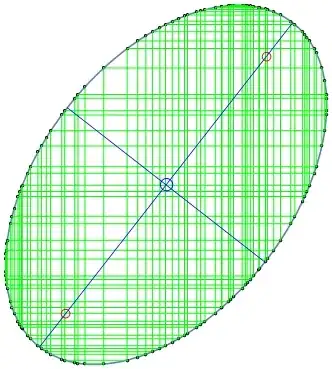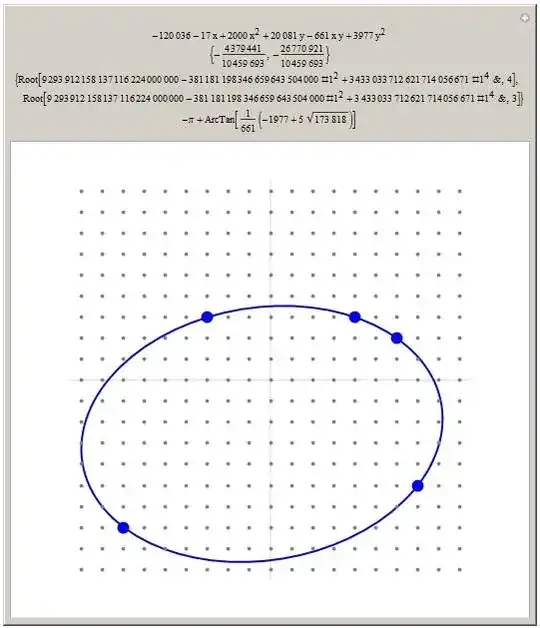A conic goes through the points $((-1,-3), (-1,1), (0,-3), (0,2), (3,0), (3,2))$ with equation $(-5, 4, -4, 7, -4, 24).(x^2, x y, y^2, x, y, 1)=0$, that happens to be an ellipse. The ellipse passes through various other rational points, such as the following:
$((-8,-13), (-8,0), (16,5), (16,6))/5 \\ ((-14,-19), (-14,-3), (10,-19), (10,21), (18,-11), (18,21))/8 $
Here's a picture of it with various rational points connected by horizontal or vertical lines. The center is at $(5/8, -3/16)$.
With some amount of extreme numerical hackery I found exact solutions for the major and minor axis.
Let $A$ be 4 sols of $8125 + 7500 x - 4400 x^2 - 2560 x^3 + 1024 x^4 = 0$.
Let $B$ be 4 sols of $-181561 - 9768 x - 23744 x^2 + 12288 x^3 + 16384 x^4 = 0$.
The major axis is $((A_1,B_1),(A_4,B_4))$. The minor axis is $((A_2,B_3),(A_3,B_2))$.
Why? Where the heck did those polynomials $A$ and $B$ come from that completely solve the problem? Is there some easy and elegant method for finding them? Do they have a name?
Partially caused by the paper Where is the Cone? I wondered if there was some easy way to find the cone for some random points.
Here's five simple points leading to a scarier polynomial: $((4,3),(6,2),(7,-5),(-3,3),(-7,-7))$. Let $C$ be $$9293912158137116224000000-381181198346659643504000 x^2+3433033712621714056671 x^4 = 0$$
The lengths of the minor and major axis are $C_3$ and $C_4$.

